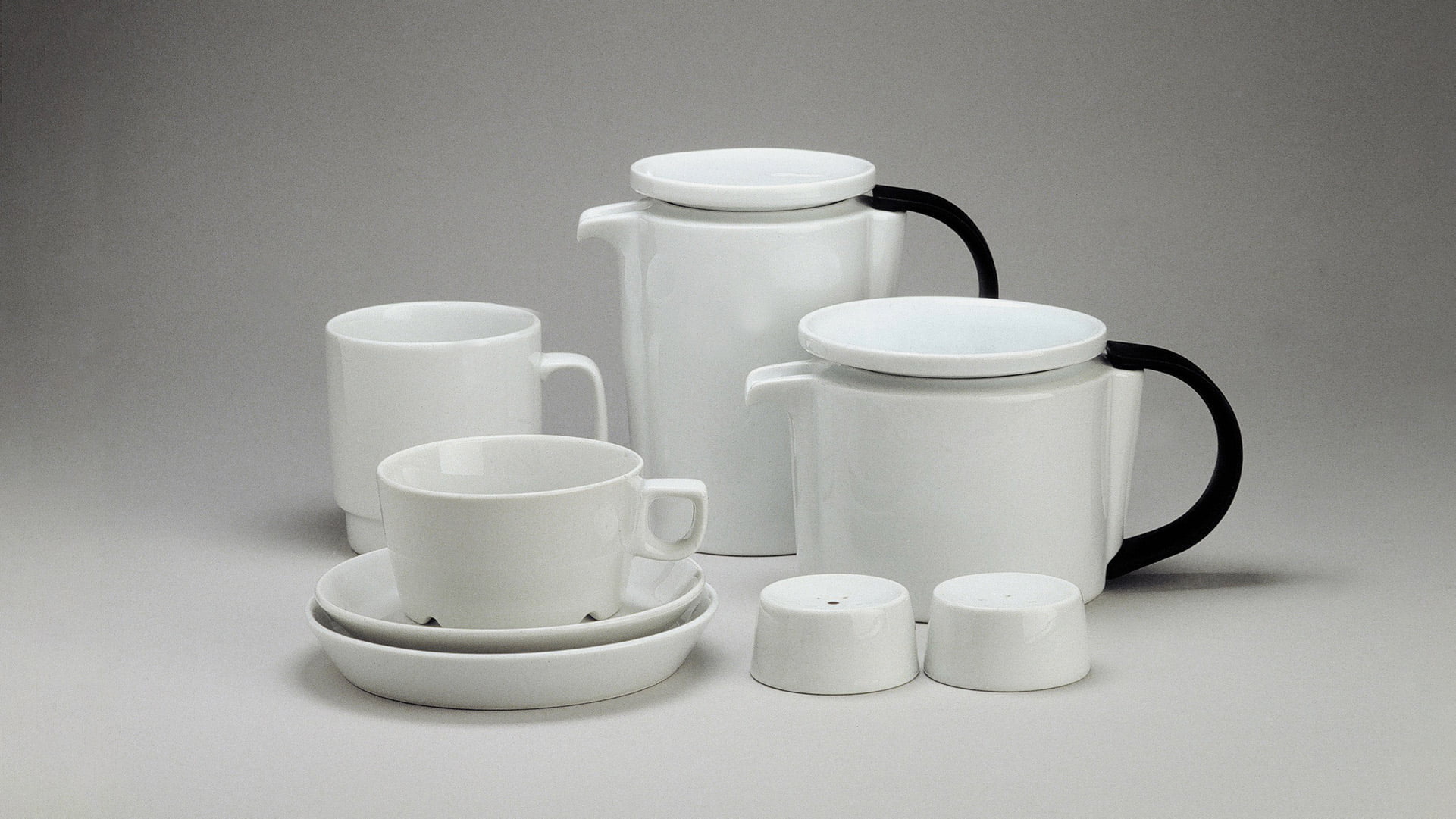
Hank
Hank was a revolution in porcelain sets. For the first time porcelain was combined with plastic, glass and melamine.
Erik Magnussen wanted to redefine, simplify and improve the traditional public porcelain service.
Bing & Grøndahl Porcelain Factory CEO, Ebbe Simonsen, was ready for it.
Photo: Antonio Wohlert
‘Hank’ is the Danish word for handle – the name referring to Erik Magnussen’s choice of plastic handles for the jugs. Very easily snapped on and unbreakable.
The total amount of parts is minimized by making several parts multifunctional. The plates fit as lids on the bowls, and the cup keeps the boiled egg warm during serving.
The decoration is far from traditional – it is not an adornment. A logical material and color scheme is developed which communicates with the user – the red plastic cover keeps the food warm, the pepper mill is black and the salt mill white etc.
Magnussen made the mills out of three parts, after investigating the market thoroughly and not finding mills with less than nine parts. Also the cup/saucer issue was reconsidered. Why the traditional hollow in the saucer which collects the spilt coffee? The Hank saucer catches the cup on an elevation instead of a hollow to avoid spilling the coffee when lifting the cup.
Public transport management were responsive to the new ideas, and the ferrylines and The Danish Railways soon made ‘Hank’ well known among the Danes.



